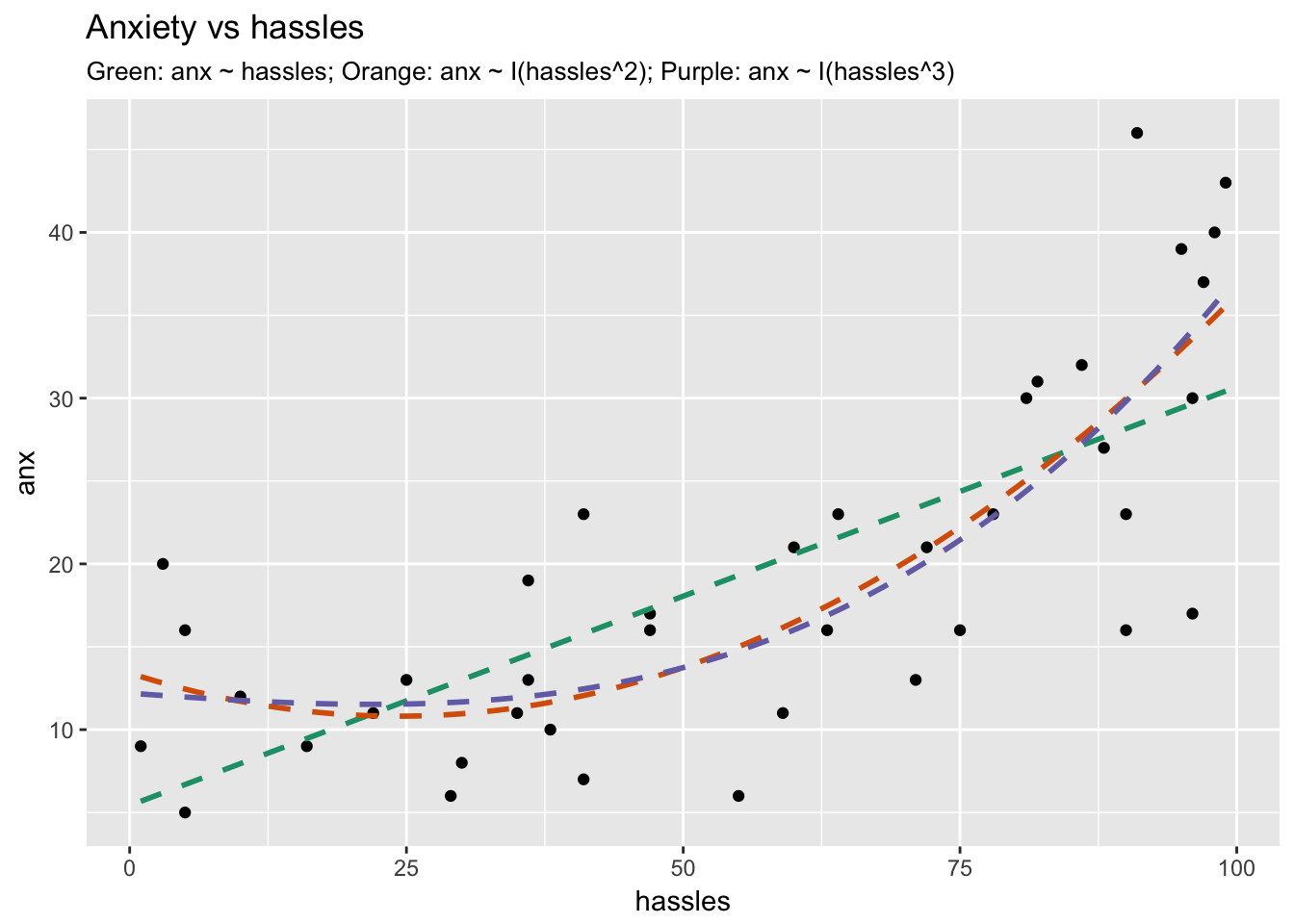GAM to learn non-linear transformations
Supervised Learning in R: Regression

Nina Zumel and John Mount
Win-Vector, LLC
Generalized Additive Models (GAMs)
$$ y \sim b0 + s1(x1) + s2(x2) + .... $$
Learning Non-linear Relationships

gam() in the mgcv package
gam(formula, family, data)
family:
- gaussian (default): "regular" regression
- binomial: probabilities
- poisson/quasipoisson: counts
Best for larger datasets
The s() function
anx ~ s(hassles)
s()designates that variable should be non-linear- Use
s()with continuous variables- More than about 10 unique values
Revisit the hassles data

Revisit the hassles data
| Model | RMSE (cross-val) | $R^2$ (training) |
|---|---|---|
| Linear ($hassles$) | 7.69 | 0.53 |
| Quadratic ($hassles^2$) | 6.89 | 0.63 |
| Cubic ($hassles^3$) | 6.70 | 0.65 |
GAM of the hassles data
model <- gam(
anx ~ s(hassles),
data = hassleframe,
family = gaussian
)
summary(model)
...
R-sq.(adj) = 0.619 Deviance explained = 64.1%
GCV = 49.132 Scale est. = 45.153 n = 40
Examining the Transformations
plot(model)

$y$ values: predict(model, type = "terms")
Predicting with the Model
predict(model, newdata = hassleframe, type = "response")

Comparing out-of-sample performance
Knowing the correct transformation is best, but GAM is useful when transformation isn't known
| Model | RMSE (cross-val) | $R^2$ (training) |
|---|---|---|
| Linear ($hassles$) | 7.69 | 0.53 |
| Quadratic ($hassles^2$) | 6.89 | 0.63 |
| Cubic ($hassles^3$) | 6.70 | 0.65 |
| GAM | 7.06 | 0.64 |
- Small dataset $\rightarrow$ noisier GAM
Let's practice!
Supervised Learning in R: Regression

